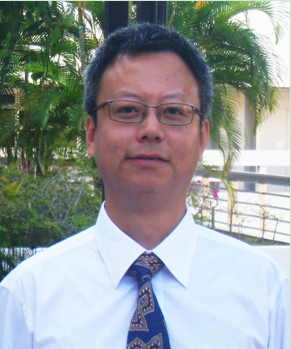报告时间:2018年2月27日11:00
报告地点:科技创新大楼5楼学术报告厅
报告人:张华教授
报告题目:Synthesis and Applications of Novel Two-Dimensional Nanomaterials
Abstract
In this talk, I will summarize the recent research on synthesis, characterization and applications of two-dimensional nanomaterials in my group. I will introduce the synthesis and characterization of novel low-dimensional nanomaterials, such as graphene-based composites including the first-time synthesized hexagonal-close packed (hcp) Au nanosheets (AuSSs) on graphene oxide, surface-induced phase transformation of AuSSs from hcp to face-centered cubic (fcc) structures, the synthesis of ultrathin fcc Au@Pt and Au@Pd rhombic nanoplates through the epitaxial growth of Pt and Pd on the hcp AuSSs, respectively, the first-time synthesis of 4H hexagonal phase Au nanoribbons (NRBs) and their phase transformation to fcc Au RNBs as well as the epitaxial growth of Ag, Pt and Pd on 4H Au NRBs to form the 4H/fcc Au@Ag, Au@Pt and Au@Pd core–shell NRBs, and the epitaxial growth of metal and semiconductor nanostructures on solution-processable transition metal dichalcogenide (TMD) nanoshees at ambient conditions, single- or few-layer metal dichalcogenide nanosheets and hybrid nanomaterials, the large-amount, uniform, ultrathin metal sulfide and selenide nanocrystals, other 2D nanomaterials, nanodots prepared from 2D nanomaterials, and self-assembled 2D nanosheets and chiral nanofibers from ultrathin low-dimensional nanomaterials. Then I will demonstrate the applications of these novel nanomaterials in chemical and bio-sensors, solar cells, water splitting, hydrogen evolution reaction, electric devices, memory devices, conductive electrodes, other clean energy, etc.
Keywords:Two-dimensional nanomaterials; Graphene; Metal dichalcogenides; Nanodevices; Field-effect transistors; Sensors; Clean energy
Brief CV
Dr. Hua Zhang was promoted to a tenured Associate Professor on March 1, 2011, and Full Professor on Sept. 1, 2013. His research is highly interdisciplinary. His current research interests focus on the crystal phase engineering of nanomaterials and controlled epitaxial growth of heterostructures, including the synthesis of ultrathin two-dimensional nanomaterials (e.g. metal nanosheets, graphene, metal dichalcogenides, metal-organic frameworks, covalent organic frameworks, etc.), novel metallic and semiconducting nanomaterials and their hybrid composites, for applications in nano- and biosensors, clean energy, (opto-)electronic devices, catalysis, and water remediation, etc.

